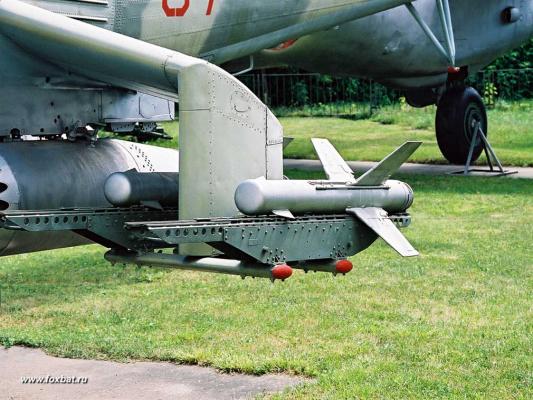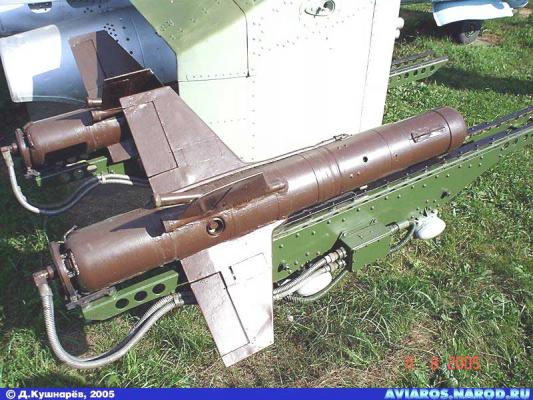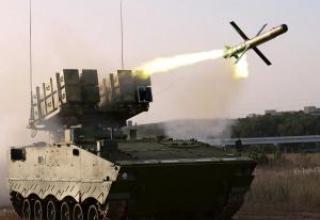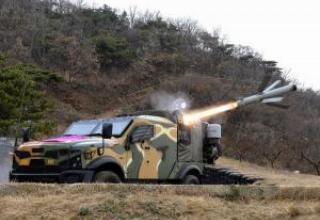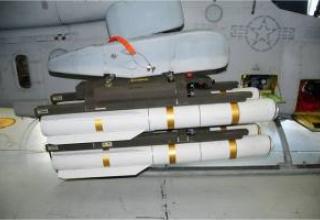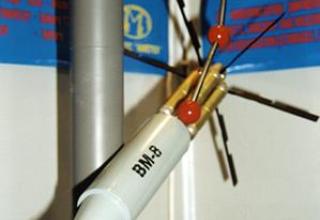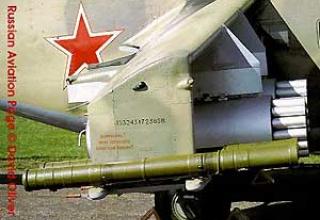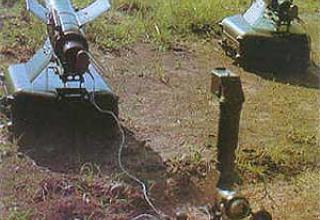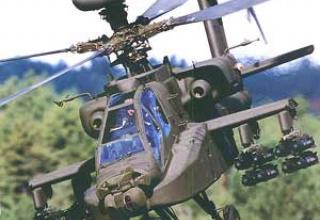The Falanga-PV anti-tank missile system is designed to defeat the enemy's armored vehicles with a semi-automatic and manual method of control in direct optical visibility conditions.
It was created in the Precision Engineering Design Bureau (Chief Designer A.E.Nudelman) on the basis of the Falanga-M complex. Adopted for service in 1969, since 1973, a series of combat helicopters Mi-24D with four PTUR 9M17P. Rocket 9M17P also became the main for the armament of other types of helicopters, which were previously installed on the complex "Falanga-M". On the launchers of helicopters such as Mi-4AV and Mi-8TV were placed up to four missiles simultaneously.
Manufacturer Kovrov Mechanical Plant.
The complex was supplied for export and is still in service with the armies of Afghanistan, Bulgaria, Cuba, Czechoslovakia, Egypt, Hungary, Libya, Poland, Yemen, Syria, Vietnam, Iraq, etc.
In the west, the complex was designated AT-2C "Swatter-C".
Composition:
The 9M17P rocket (see the scheme) is made according to the normal aerodynamic scheme and, in general, is similar to the 9M17M rocket of the Phalanga-M complex. The main difference is the use of a new radio command system of semi-automatic control, coupled with the "Rainbow-F" equipment on the helicopter carrier. Aiming the missile at the target is carried out by the three-point method. The controls are aerodynamic rudders.
At present, the developer proposes a deep upgrade of the complex to increase armor penetration to a level that ensures the defeat of modern tanks, including those equipped with dynamic armor and a significant expansion of the range of combat application through the use of various types of combat equipment (shrapnel, volumetric detonation and other combat units).
The new versions were presented at the MAKS-99 Air Show in Zhukovsky in August 1999. Modified versions of the rocket can be used with the available in the armament of the launchers: self-propelled launcher 9P137 and helicopters type MI-24 - in semi-automatic or manual modes of guidance, at launches with PP 9P124 - only in manual mode.
The upgraded versions of the 9M17P retained all combat and operational characteristics of its predecessor and differ from it in types of combat units:
- 9M17P mod. 1 is equipped with a new combat unit with increased effectiveness for guaranteed penetration through the armor protection up to 400 mm thick (60 degrees from normal). The new BC is equivalent to a 4.1kg cumulative combat unit.
- 9M17P mod. 2 is equipped with an improved 7.5kg combat unit with the ability to hit armor more than 400mm thick (60 degrees from normal).
Characteristics:
| Starting range in semi-automatic mode, m | 450-4000 |
| Starting range in manual mode, m | 600-4000 |
| Flight Speed max.m/sec | 230 |
| Flight speed average, m/sec. | 170 |
| Target speed, km/h | 60 |
| Speed, gunshot/min. | 2 |
| The length of the rocket, mm | 1160 |
| Maximum housing diameter, mm | 142 |
| Wingspan, mm | 680 |
| Start weight, kg | 31.5 |
| Battle unit of missile 9M17P (9H114) | |
| type | cumulative |
| weight, kg | 7 |
| BB weight, kg | 3.6 |
| armor permeability, mm | 500-650 |
| armor permeability (at 60 degrees to normal), mm | 280 |
| Battle unit of 9M17P missile mod.1 | |
| type | cumulative |
| BB weight (trotyl equivalent) , kg | 4.0 |
| armor permeability (at 60 degrees to normal), mm | до 400 |
| 9M17P missile combat unit mod.2 | |
| type | cumulative |
| BB weight (trotyl equivalent) , kg | 7.0 |
| armor permeability (at 60 degrees to normal), mm | over 400 |
Sources:
- А.В.Карпенко, С.М. Ганин "Отечественные авиационные тактические ракеты", "Бастион" N1, 2000г.
